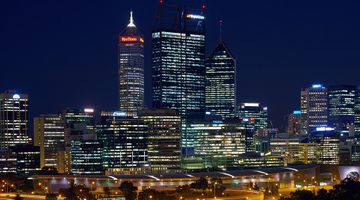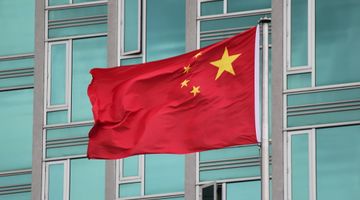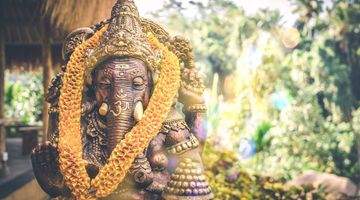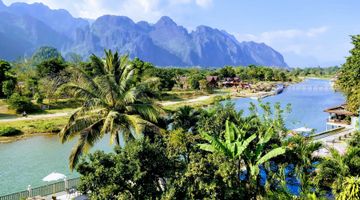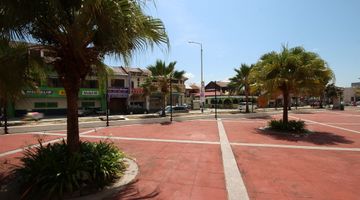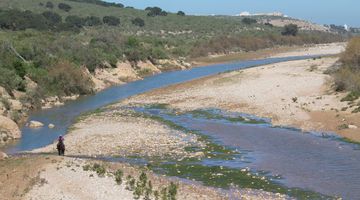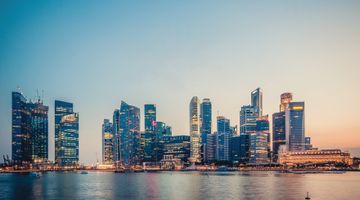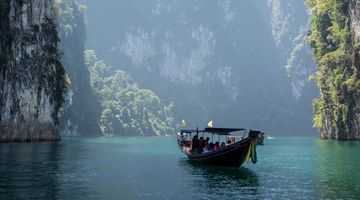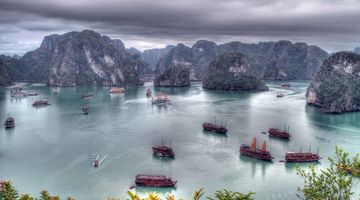Explore Nepal 2026 – 12Go's Complete Travel Guide
Nepal isn’t just mountains and temples; it’s noise, dust, color, and life rushing at you all at once.
Kathmandu feels like chaos stitched together with incense smoke and motorbike horns, a city that keeps shifting.
The trails around Everest and Annapurna pull in trekkers, but the mountains are more than summits; villages and monasteries anchor the high-altitude silence.
Far south, Chitwan and Bardiya stretch out in grasslands heavy with rhinos, tigers, and humid heat—a different world from the thin northern air.
And through it all, from Lumbini’s sacred birthplace to the smallest roadside shrine, Buddhist and Hindu traditions weave the country into something both restless and timeless.
What is the best season to travel in Nepal?
Nepal can be visited year-round, but each season has its own character.
Winter, especially January, brings freezing nights and snowed-in passes, though lower-altitude treks remain open. Southern areas like Chitwan are accessible, but high-altitude trekking is often harsh.
Spring, from late February to mid-April, offers warmer weather, longer days, and rhododendrons in bloom.
Summer, from June to September, is the monsoon season, with heavy rains that lush the landscapes but often close trekking routes.
Autumn, from October to December, is the most popular time: clear skies, crisp air, and sharp mountain views. Mid-September can also be good, with fewer tourists and drying trails.
How to get to Nepal?
The easiest way to get to Nepal is by flying into Kathmandu’s Tribhuvan International Airport, with connections from India, the Middle East, Southeast Asia, and China.
How to get to Nepal from Europe?
From Europe, the easiest way to reach Nepal is via Istanbul with Turkish Airlines or through Middle Eastern hubs like Doha (Qatar Airways) or Dubai (Emirates).
A cheaper alternative is flying to Delhi and then catching a local flight to Kathmandu.
Southeast Asian stops like Bangkok or Singapore also work well if you find a good deal. For the best prices, book 2 months in advance and try midweek flights.
Direct flights are fastest, but one-stop routes can save money if you’re flexible.
How to get to Nepal from Asia?
Flights from Asia to Nepal are quick: Delhi ~1.5h, Bangkok ~3.5h, Hong Kong ~4h, Singapore/Kuala Lumpur ~4.5h.
From India, you can also cross by land at Raxaul, Sunauli, or Birgunj, taking 6–12 hours by bus or taxi.
Travelers from China or Tibet enter via Kodari or Gyirong, but need permits and rough roads can slow you down.
How to get to Nepal from Australia?
From Australia, you’ll need to connect through hubs like Singapore, Kuala Lumpur, Bangkok, or Delhi to reach Kathmandu.
Flights usually take 12–18 hours with layovers.
Airlines like Singapore Airlines, Thai Airways, Malaysia Airlines, AirAsia, or Qantas cover the route.
How to get to Nepal from the United States?
From the U.S., you’ll need to connect through hubs like Doha, Dubai, Delhi, Istanbul, or Bangkok to reach Kathmandu.
The trip usually takes 20–30 hours with layovers.
Qatar Airways, Emirates, Turkish Airlines, and Singapore Airlines offer good routes.
Transportation in Nepal
Nepal’s transportation depends heavily on geography: flat plains rely on buses and highways, while mountain regions need flights or sturdy jeeps.
Roads connect most towns, but many remain narrow, rough, and prone to landslides.
Long-distance buses dominate intercity travel; tourist buses offer slightly more comfort, while microbuses and jeeps handle remote routes.
Domestic flights save time on hard-to-reach destinations like Lukla or Pokhara, with local airlines running frequent routes.
Railways barely exist—only a small line in the Terai links to India.
In cities, public buses and microbuses run constantly but lack clear routes.
Motorcycles are everywhere, weaving through traffic where cars get stuck.
Cross-border buses connect Nepal to Indian cities, making overland travel possible.
Bicycles show up mostly in quieter rural areas, away from urban chaos.
Popular routes in Nepal
In Nepal, the busiest route is Kathmandu–Pokhara, linking the capital with the Annapurna gateway; it’s a 6–8 hour drive or a 25-minute flight.
Kathmandu to Chitwan takes you to the famous national park, about 5–6 hours by road.
Kathmandu to Lumbini leads to the birthplace of Buddha, usually a long bus ride or a flight to Bhairahawa.
Kathmandu to Lukla is the classic flight route for Everest trekkers, short but unforgettable.
From Pokhara to Jomsom or Muktinath, the road winds through Mustang’s dramatic landscapes, though flights are faster.
Kathmandu to Janakpur draws both religious travelers and those heading toward India.
Overland buses also run from Kathmandu to Indian cities like Varanasi or Delhi via Sunauli.
Where to travel in Nepal?
Kathmandu Valley
Kathmandu Valley is Nepal’s cultural heart, home to three UNESCO cities: Kathmandu, Patan, and Bhaktapur.
Each city carries layers of history, from ancient temples to royal courtyards, blending Hindu and Buddhist traditions.
Highlights include Swayambhunath (Monkey Temple), Boudhanath Stupa, Pashupatinath, and Durbar Squares, where architecture tells stories of the Malla period.
Narrow streets reveal hidden corners, local markets, and quiet squares that invite lingering. Moving around is easy with taxis, rickshaws, or private cars.
Accommodation ranges from simple guesthouses to boutique hotels, while food offers both Nepali classics and international flavors.
Beyond sightseeing, the valley offers hiking, yoga, and cultural experiences.
Bhaktapur
Bhaktapur, in the Kathmandu Valley, feels like stepping back in time. Its streets are full of traditional Newari buildings with carved wooden windows and doors.
Durbar Square is the heart of the city, packed with temples, courtyards, and historic sites.
Local artisans still make pottery and crafts using techniques passed down for generations.
Nyatapola Temple, one of Nepal’s tallest pagoda-style temples, stands out on the skyline.
Festivals here are colorful and lively, with music, dance, and rituals.
King curd and sweet treats are must-tries for anyone visiting.
Where to go from Katmandu?
Kathmandu to Pokhara
You can travel by bus from Kathmandu to Pokhara for as low as NPR 854 (~USD 7). Alternatively, a flight option starts from NPR 854 (~USD 7).
Kathmandu to Delhi
You can take a bus from Kathmandu to Delhi with a starting fare of around ~USD 37. A flight option begins from ~USD 45-50.
Kathmandu to Chitwan
The best way to reach Chitwan is by using a bus. The starting price for travel from Kathmandu to Chitwan is NPR 747 (~USD 6-7).
Pokhara
Pokhara, Nepal’s second-largest city, offers a calm alternative to the chaos of Kathmandu, set against the backdrop of Phewa Lake and the Annapurna mountains.
It serves as a gateway for trekkers on the Annapurna Circuit or shorter routes like the Poon Hill hike, and as a resting point for those returning from the trails.
Travel from Kathmandu is typically by bus, with flights available, and local transport or lakeside accommodation makes getting around straightforward.
Phewa Lake draws visitors for its calm waters, boat rides, and the small Tal Barahi Temple on an island at its centre.
Sunrise and sunset from Sarangkot or the World Peace Pagoda offer panoramic views of the city, lake, and surrounding peaks.
Nearby natural attractions include the thundering Devi’s Falls and the labyrinthine Gupteswar Cave, a quiet insight into local life.
For those seeking activity, Pokhara provides options from paragliding and rafting to helicopter flights over the mountains.
Bejnas Lake offers a more secluded alternative to the busier Phewa Lake, ideal for walks or quiet reflection.
Where to get from Pokhara?
Pokhara to Jomsom
Bus tickets start from $8.89 (~8 h), and flights begin at $48 (~20 min).
Pokhara to Chitwan
Bus fares start at $5.49 (~6 h), while flights begin at $452.
Pokhara to Nagarkot
Bus travel takes about 8 h (price not listed), and flights start at $87.
Chitwan National Park
Chitwan National Park, Nepal’s first national park and a UNESCO World Heritage Site, is a rare haven of biodiversity.
The subtropical lowlands of the Inner Terai are home to one-horned rhinos, tigers, elephants, and sloth bears, which can be glimpsed on jeep safaris, walking tours, or canoe trips along the Rapti River.
Birdwatchers may spot the endangered Bengal florican among the park’s rich avian life.
Nearby Sauraha provides eco-conscious lodges, ensuring visitors can experience the jungle without leaving a heavy footprint.
Highlights include the chance to observe elephants up close and guided walks that bring guests into intimate contact with the wilderness.
Thanks to sustained protection initiatives, populations of rhinos and tigers are stabilising, making Chitwan a success story wildlife preservation.
Its proximity to Kathmandu makes it accessible for short trips or longer stays. The park is a place where adventure, wildlife, and culture converge, offering a deeply memorable experience.
Janakpur
Janakpur, in southeastern Nepal, is a city steeped in history and religious significance, known as the birthplace of Goddess Sita.
Its landmark, the Janaki Mandir, is a white marble temple adorned with intricate Mithila art, while the nearby Ram Mandir and Shree Ram Janaki Biwah Mandir commemorate Lord Ram and Sita’s legendary wedding.
The city is dotted with more than 70 sacred ponds, including Dhanush Sagar and Ganga Sagar, which continue to draw pilgrims and visitors alike.
Janakpur is also a centre for Mithila culture, where traditional art, music, and craftsmanship remain integral to daily life.
Local markets offer a glimpse into this cultural heritage, alongside Indian street food and traditional sweets that reflect the region’s unique fusion.
Festivals such as Vivah Panchami, Chhath, and Ram Navami transform the city, providing a vivid window into its religious calendar. Accessible by road and Nepal’s only railway station, Janakpurdham, Janakpur is best visited between September and March, when the weather is most accommodating.
Visitors are advised to dress modestly and respect local customs, ensuring a more meaningful engagement with the city.
Where to travel from Janakpur?
Lumbini
Lumbini, in southern Nepal near the Indian border, is celebrated as the birthplace of Siddhartha Gautama, who later became the Buddha, and has been recognised as a UNESCO World Heritage site.
The city’s flat grasslands and quiet avenues are home to the Maya Devi Temple, marking the Buddha’s birth, the Ashokan Pillar, the sacred Mayadevi Pond, and the Bodhi Tree, under which he is said to have attained enlightenment.
Over 14 international monasteries, spanning Theravada and Mahayana traditions, line the Lumbini Development Zone, alongside the Lumbini Museum, which holds manuscripts and artefacts charting the region’s spiritual history.
Visitors can explore the site on foot, by rickshaw, or along the canal, taking in the serene, park-like atmosphere. Lumbini Bazaar nearby provides modest accommodation, eateries, and transport connections, while the wider region is accessible via Gautam Buddha International Airport in Bhairahawa or by bus from Kathmandu or Pokhara.
Everest Region (Khumbu)
Mount Everest, or Qomolangma as it is known in Tibet, remains the ultimate test of human endurance and skill.
Climbers can approach it from Nepal, with trekking routes leading to Everest Base Camp via Lukla and Sherpa villages, or from Tibet, where overland journeys pass Yamdrok Lake and Rongbuk Monastery.
The ascent demands negotiating steep rock and ice slopes, often over 45 degrees, and requires equipment such as crampons, ice axes, and supplemental oxygen.
Above 8,000 metres, in the “death zone,” oxygen is dangerously low, making careful acclimatisation essential.
Along the way, trekkers encounter landmarks including Namche Bazaar, Dingboche, Syangboche, Kala Patthar, and the Khumbu Glacier, while Tibetan routes offer improved accommodation and services.
Most climbers attempt the mountain in spring or autumn, when weather conditions are clearest. Responsible travel is encouraged, with an emphasis on respecting local cultures and the fragile high-altitude environment.
Fewer than 4,000 people have reached the summit, underscoring the mountain’s formidable challenge. Many expeditions now combine Nepal and Tibet itineraries, allowing travellers to experience Everest from both perspectives.
Annapurna Region
The Annapurna region in western Nepal offers some of the Himalayas’ most iconic trekking experiences. Dominated by Annapurna I at 8,091 metres, the area also includes peaks like Machhapuchhre, Nilgiri, and Dhaulagiri.
The Annapurna Conservation Area protects diverse ecosystems, from subtropical forests to alpine meadows, and local villages showcase traditional Nepali life.
The 190 km Annapurna Circuit encircles the massif, typically taking 20 days, and crosses Thorong La Pass at 5,416 metres. Trekkers can take detours to Tilicho Lake or the Annapurna Sanctuary for extended routes and closer views of the peaks.
Trails pass through terraced fields, traditional villages, and the Kali Gandaki, the world’s deepest river valley.
The Annapurna Sanctuary trek leads to base camp, while trans-Himalayan areas offer arid landscapes and Tibetan-influenced culture. Pokhara serves as the gateway, providing transport, accommodation, and supplies. All foreign trekkers must now travel with licensed guides, and proper acclimatisation, preparation, and gear are essential.
Patan (Lalitpur)
Lalitpur, or Patan, is a city where centuries of art and history are preserved in every courtyard and temple. Its streets are adorned with intricately carved buildings and public courtyards known as "bahals," reflecting the enduring influence of Newar culture.
Patan's Durbar Square, with its 14th-century royal palace, offers a glimpse of Nepal's medieval grandeur, while the Golden Temple (Hiranya Varna Mahavihara) offers a calm retreat amid gilded architecture.
The Mahabuddha Temple, known as the "Temple of a Thousand Buddhas," and the Krishna Mandir, with its graceful stonework, are further reminders of the city's rich spiritual life.
Beyond its monuments, Lalitpur welcomes visitors with affordable hostels, local cafes, and pedestrian streets that reveal hidden galleries and an authentic flavor of Nepalese life.
Festivals, particularly the Rato Machindranath Jatra, enliven the city every spring with processions.
The Ashoka stupas and the Sri Bangalamukhi Temple offer historical and spiritual depth, and the warmth of the local people leaves a lasting impression.
Mustang
Mustang, tucked in the rain shadow of the Himalayas, is divided into Upper and Lower regions, each offering its own distinct character.
Upper Mustang, long known as the "Last Forbidden Kingdom," requires a permit costing $500 for the first ten days, with an additional $50 per day thereafter, whereas Lower Mustang is more accessible to travellers without formal permission.
The journey typically begins with a flight from Kathmandu to Pokhara, followed by another flight or jeep ride to Jomsom.
From there, treks to Lo Manthang wind through villages such as Kagbeni, Chaile and Ghami, where Tibetan-influenced culture meets stark Himalayan landscapes.
The optimal time to visit is spring or autumn, when clear skies and mild temperatures make trekking a pleasure. Highlights include the walled city of Lo Manthang, ancient monasteries like Thubchen and Chungsi Cave, and the dramatic Kali Gandaki Gorge.
Visitors can opt for guided treks, jeep tours, or private excursions. Budget travellers may prefer a tour of Lower Mustang, taking in Marpha, Jomsom, and the sacred Muktinath Temple.
The region offers a rare combination of adventure and cultural immersion, with landscapes that feel both remote and timeless.
Food in Nepal
Nepalese cuisine is a unique blend of flavors that reflects the country's diverse cultures, landscapes, and history.
At the heart of every meal is Dal Bhat Tarkari, a combination of lentil soup, rice, and vegetable curry, often accompanied by pickles and achar.
What to eat in Nepal?
Momos, steamed or fried dumplings filled with meat or vegetables, are a ubiquitous street snack, while Thukpa, a noodle soup influenced by Tibetan cuisine, provides hearty comfort on colder days.
Sweet treats include Sel Roti, a ring-shaped rice doughnut enjoyed during festivals, and Yomari, a steamed dumpling filled with jaggery and sesame seeds, traditionally made for Yomari Punhi.
Unique local dishes such as Chatamari, sometimes called “Nepali pizza,” and Wo, a lentil-based pancake from the Newari community, showcase regional creativity.
Gundruk, fermented leafy greens, and Kwati, a mixed bean soup, reflect Nepal’s use of indigenous ingredients and preservation techniques.
Snacks like Samosas and Chiura—flattened rice eaten with yogurt or curry—remain popular staples.
Kheer, a milk-based rice pudding, rounds off the meal with a touch of sweetness.
FAQ
1. Do I need a visa to visit Nepal?
Most travelers can get a visa on arrival at Tribhuvan International Airport or land border points. Check your country’s requirements before traveling.
2. What vaccinations or health precautions are recommended?
Routine vaccines are recommended, and travelers should consider Hepatitis A, Typhoid, and Tetanus. Drink bottled or boiled water and avoid raw foods to prevent stomach issues.
3. How safe is Nepal for tourists?
Nepal is generally safe, but petty theft can occur in crowded areas. Avoid isolated areas at night and follow local advice when trekking.
4. What currency is used, and are ATMs widely available?
The Nepalese Rupee (NPR) is the local currency. ATMs are common in major cities, but carry cash for remote areas.
5. Do I need special gear for trekking in the Himalayas?
Yes. Proper trekking shoes, layered clothing, rain gear, and a good backpack are essential. High-altitude treks may require additional gear like trekking poles and warm clothing.
















